| Glass furniture became more popular and complex in the late 1800s. This table was one of four made in 1878 by the Baccarat company. The bowl is to the design of Charles Vital Cornu. The ensemble was first displayed at the 1900 World Fair in Paris. | 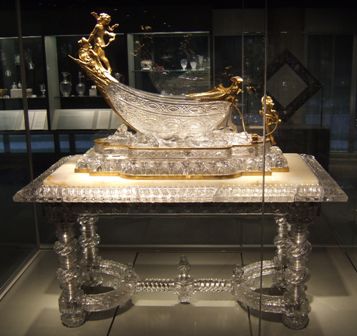 |
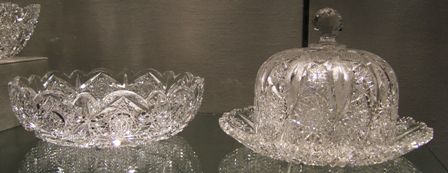 |
Several pieces of cut glass in an exhibition of pieces made in
various American workshops during the period 1868 to 1962, after which Corning's
participation in the industry ceased. All the pieces are in a Bohemian-style
pattern which Jan really loves. |
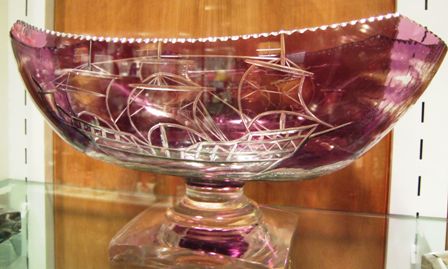 | This cut glass bowl has a pair of matching
candlesticks and so was obviously designed as a set piece. |
| This is another exhibition piece probably from the
1900 World Fair in Paris. It is a punch bowl set which was an object
particularly prized at that time. This is a very beautiful example of the
finest craftsmanship. | 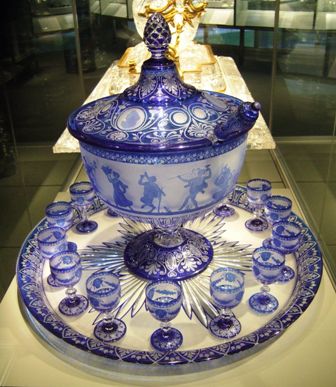 |
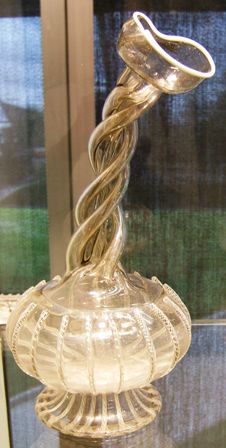 |
The neck of this bottle is formed of several narrow tubes, which must have
made for interesting drinking/pouring sounds. The style was invented in
Roman times, but became popular again in 13th century Europe, which is the
period when this one was made. |
| The 'King Athamas' pitcher is one of the recently
acquired items in the gallery. It is part of a limited edition series
designed by Jean Cocteau for the Cristallerie Daum in Nancy, France in 1957,
and is made in 'pate de verre'. | 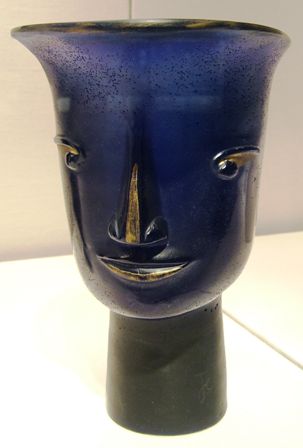 |
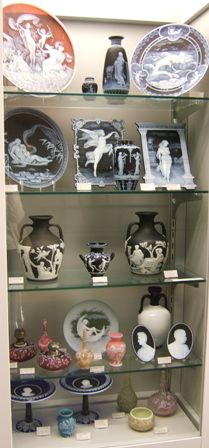 |
There are lots of cabinets with collections of a type of glass but without
specific details. Sometimes I just thought the cabinet display looked good,
or maybe the photograph was free of reflections.. |
| This is a Chinese ruby glass vase probably from the
Qianlong period (1736-96). This exceptionally large object is known as the
'Warrior Vase' The ruby glass has been wheel cut to reveal the frosted glass
underneath. It depicts warriors racing past a temple where priests are
worshipping. | 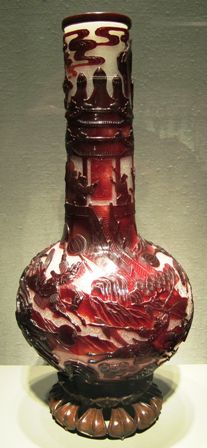 |
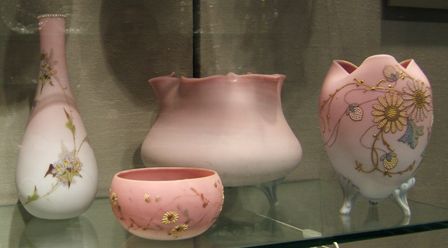 |
This was a particularly attractive grouping in a very delicate shade. Glass
is such a versatile medium. |
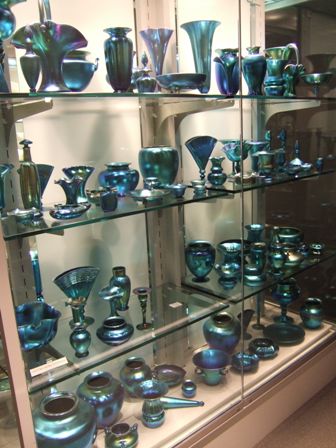 |
Frederick Carder (1863-1963) was an English glassmaker and designer who
was given a free hand to design products and develop new colours and
techniques at the Steuben
glass works from 1903-32. When Steuben decided to concentrate on colourless
glass he became the design director for Corning.
The remaining pictures on this page are all of various types of glass
developed by him or are pieces made by him during his long career (he
'retired' at the age of 96) and are displayed in the separate gallery which
bears his name.These two collections are of a type of glass called aurene.
The velvety soft iridescence was first achieved in 1904 by spraying the hot
glass with stannous chloride. The gold came first, the blue aurene was
produced in 1905 by adding cobalt to the mix. They remained in continuous
production until the mid 1930s. | 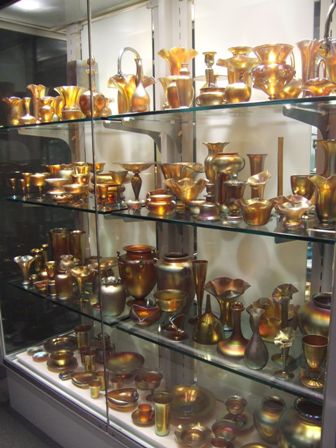 |
| His glassware was very fashionable, so the shapes
changed in tune with the styles of the moment. This series has a distinctly
art deco feel. | 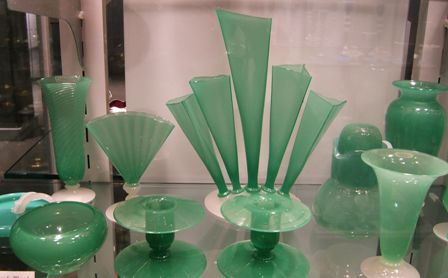 |
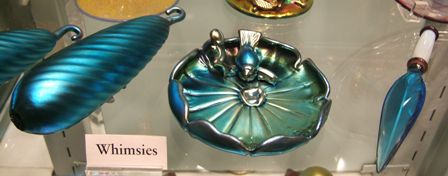 |
The glass objects produced by this factory were very fashionable in their
day, but also very expensive. So if you could not afford a whole drinks
service, you could still have a trinket tray, a letter opener or a pair of
ornaments. |
| Part of a large group of perfume bottles made in many
of the new types of glass developed over the years, and very collectable. | 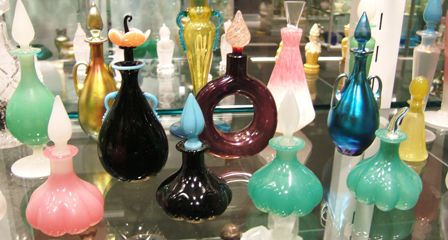 |
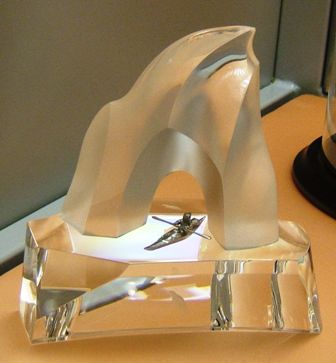 |
And finally two individual pieces in the style for which
Steuben is famous today, incorporating elements in metal to give the
finishing touch. |
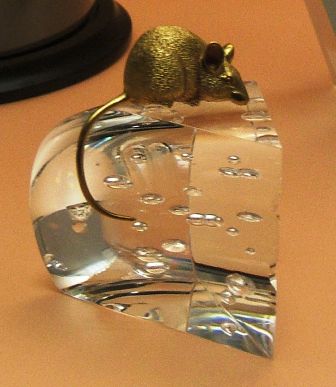 |
|